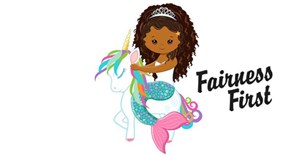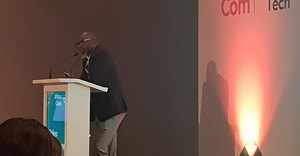#AfricaCom: What is an African broadcaster in a multi-platform world?

On Tuesday, 7 November, Southwood, who has worked on telecoms, internet and media in Africa for the last 17 years, presented at the Connectivity Stage and focused on TV and video as drivers of African bandwidth growth. Here, he elaborates on this theme and talks us through what it entails being an African broadcaster in a multi-platform world and how we can go about getting the most out of our content.
Olivier Laouchez, co-founder and CEO of Trace TV said:
“Mobile is the TV remote for young Africans. It gives them access to entertainment and services.”So, it’s not just TV anymore but mobile as well and mobile is actually where younger Africans look for the things they’re interested in. If you look at the comparison between TV, radio and mobile, TV has always been quite far back in Africa because it actually mirrors the pattern of electricity distribution, which is often quite small. So mobile is up there at 80-90%, with radio ownership and TV not so much. And now what you have is that cheaper smartphones have created a much higher level of smartphone penetration. This in turn has led to greater levels of data penetration and data sales.
Level of smartphone penetration:
- Ghana (21%)
- Kenya (26%)
- Nigeria (28%)
- South Africa (37%)
- Tanzania (11%)
- Burkina Faso (14%)
- Senegal (19%)
- Uganda and Ethiopia (4%)
*Source: Pew Survey May 2017

The GSMA is predicting that there will be an average of 57% smartphone ownership in Africa by 2020. There will be a bit of variation within that estimate of course but the big challenge is actually the revenue share because there is now no difficulty getting content services on mobile and getting data services on mobile. The actual problem is with the mobile operators’ attitude to those services and the income. For example, one of the most successful VOD platforms in South Africa currently only has 40% of the income from that activity. The mobile operator is taking the other 60%. A content ecosystem needs at least 30% to go to the operator and 70% to the rights holder or content generator. That’s where it’s headed and it needs to go there as quickly as possible.
There’s a change happening and these driving forces behind the increase of data in Africa from TV and video are coming from three directions.
- African consumers want to be able to access TV and video content on their mobile. The key question is, what’s the business model for that? (See further below)
- Telcos need to maximise the use of the fibre infrastructure that they might develop for 4G. So, they need to roll out things like fixed offerings, e.g. FTTH (fibre to the home).
- Broadcasters need to extend their reach across both paid and free-to-air platforms. Broadcasters now need to connect audiences with devices.
Two business models:
- You pay for it. So, you, the consumer, pays for content.
- Someone else pays for it. And usually when someone else pays for it, it’s an advertiser or a sponsor.
There are now over 100 platforms in Africa and of those, you have some that are larger, like Netflix and Showmax but you still have an enormous number of people who are offering local/niche VOD platforms, which don’t have huge numbers at the moment but have some purchase in the market. This is because people want to be able to see Tanzanian content, for example, or Ugandan content, they don’t want to be able to view only international content.
Straws in the wind
- Africans in nearly all sub-Saharan countries spend $2-4 per week/per month on pirated content on USB or DVD. So, when people say, “Africans don’t spend money on content,” that’s nonsense. They do, they just don’t spend it with you. So, it’s worth thinking about how you can make life easier for those people who have pirated content. Because there are disadvantages to pirated content. You don’t know what you’re getting with this type of content. It’s not reliable, convenient or of great quality. What can you deliver that can compete with pirated content?
- 80-90% of all traffic through African country IXPs is YouTube. This means people are watching video, they’re not paying for it but they’re watching it. They’ve got an appetite for it.
- More significantly, there are now local caches for Showmax, Netflix and Akami in more developed markets. Netflix = min 12,000 subscribers before a local cache is considered.
- Youtube is a very big part of how people consume content on this continent. The top YouTube accounts in Africa: Aforevo (biggest Youtube channel operator in Africa and distributor of Nollywood content): 120 million views per month; Africori (digital music label and aggregator for the African continent): 60 million views per month.
By subscribers:
- Nigeria, RealNollywoodClips: 924,000; Nollywood Streams: 680,000; NollyNaijaTV: 617,000.
- Ghana: Official Sarkodie (musician): 211,000, MyJoyOnlineTV (traditional broadcast company but has always been doing very well in the online space): 107,000 and StoneBwoy (musician): 48,000.
So, what is an African broadcaster?
- An African broadcaster makes and broadcasts content. It has masts and production capacity. Vertically integrated and does almost everything in-house. An African state broadcaster, same but with a different “shareholder”. In other words, the president will be the shareholder, for example.
- African media content company, produces content that connects with audiences through channels that make it money. It may turn out that the average broadcaster will be earning 20-30% of their money from selling content either from a pay-TV platform, a VOD platform on social media, in some way, and that revenue will become as significant as selling the old-fashioned spots that we used to have on TV or on radio, etc. The balance of income is changing and thus the model changes. The skill is, how do you repurpose content across different platforms? How do you think about that content across different platforms?
- African public media content company. Same but with different stakeholders. Produces public interest content that connects with audiences to educate, inform and entertain.
- Data connectivity operators provide the means – whether mobile or fixed (FTTH) to help broadcasters reach audiences more effectively.
It’s a very different world out there and it’s always been difficult for mobile operators that have dominated this space. Now a relationship is being built or has to be built between mobile operators (the people who provide bandwidth) and those who provide content (broadcasters, etc). Then to be able to deliver content and to do that with a share of the revenue in a way that will make sense to all stakeholders.














